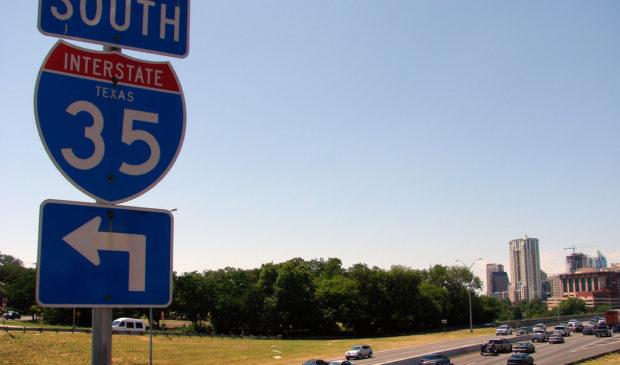Panel will look at future of development and displacement along I-35
Tuesday, February 18, 2020 by
Chad Swiatecki A panel of national experts convened by the Urban Land Institute will look at ideas next week for how Austin could steer development plans for the land surrounding – and possibly covering – Interstate 35 in the years to come. The nine-member panel will spend the week touring the area along I-35 from Cesar Chavez Street to Airport Boulevard while conducting more than 100 interviews with local leaders about how to turn downtown Austin’s major east-west divider into a community asset.
The group’s recommendations for development concepts and possible funding sources will be presented on Feb. 28. Local leaders plan to use the findings as the starting point for community forums about how to manage the surfaces associated with the interstate that is expected to be lowered.
“Lowering the interstate brings a once-in-a-lifetime opportunity to rethink what happens on the surface,” said Dewitt Peart, president and CEO of the Downtown Austin Alliance, who noted that there are 30 similar “cap and stitch” projects in progress across the nations.
“These folks have looked at the financing and the community engagement and how to do equitable development. We have the advantage of looking back on projects similar to this, and if those cities had a chance to redo it they would have taken a different approach. What we’re thinking about is not unique, so why not bring in experts to help consult with us?”
The interstate’s construction and expansion through the years heightened the divide between the rest of the city from East Austin, which was identified in the city’s 1928 master plan as the portion of the city where non-whites and minorities should be housed. That legacy – combined with the gentrification and displacement pressures that have increased as Austin’s population has boomed – has caused I-35 to be seen as symbolic of how the city has failed many of its residents.
Emblematic of that, the DAA’s press release refers to the ULI panel and quotes Sen. Kirk Watson, who has previously called the roadway both a “wound” and a “scar” on the city’s landscape.
City Council Member Natasha Harper-Madison echoed that sentiment, saying the panel process will be an important step in improving the downtown equitably.
“I-35 is a great wound on this city, but like a piece of shrapnel lodged dangerously close to a vital organ, we can’t go in willy-nilly and just rip it out,” she said via email. “Instead, we have to be intentional and deliberate so that the solutions to I-35’s division, pollution, traffic violence, and car-dependent congestion issues will also help us prevent displacement, preserve East Austin’s cultural heritage, and achieve our housing, mobility, climate, and Vision Zero goals.”
Ideas for the area surrounding and atop I-35 include features such as parks and gathering spaces as well as affordable housing to help remedy some of the displacement happening elsewhere.
Yasmine Smith, vice chair of the nonprofit People United for Mobility Action, said she hopes to work with other members of the panel’s stakeholder interview process to drive home the idea that as much affordable housing as possible should be created in eastern downtown in proximity to the lowered road.
Smith said she also wants to get more information and start a discussion about how the city, philanthropists and private developers will fund the features that are created on road caps and land currently taken up by frontage roads.
“I don’t think anyone has actually considered making new land and the opportunity that comes with that. Working with TXDoT, the city needs to make sure that is used in a way that reflects our needs and values and levels the playing field,” she said. “How much can be used for housing and how can we make sure that it is used for those of us that have been displaced or are unable to live in this city due to the affordability crisis we are facing?”
Photo by Matthew Rutledge made available through a Creative Commons license.
The Austin Monitor’s work is made possible by donations from the community. Though our reporting covers donors from time to time, we are careful to keep business and editorial efforts separate while maintaining transparency. A complete list of donors is available here, and our code of ethics is explained here.
You're a community leader
And we’re honored you look to us for serious, in-depth news. You know a strong community needs local and dedicated watchdog reporting. We’re here for you and that won’t change. Now will you take the powerful next step and support our nonprofit news organization?











